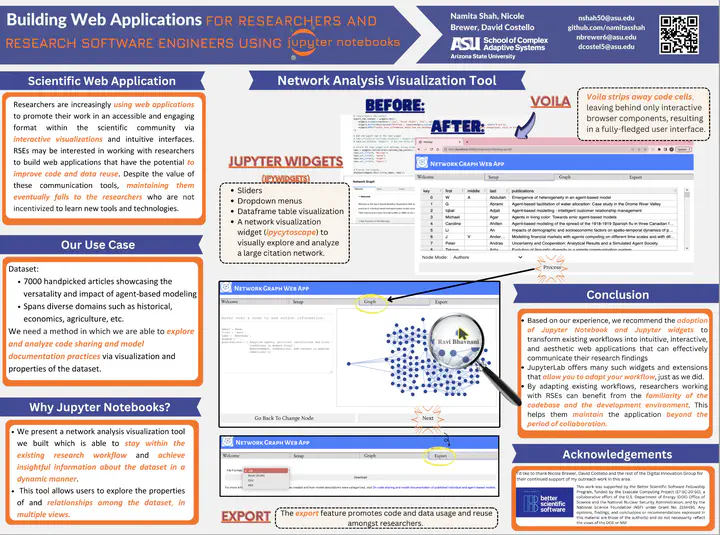Building Web Application for Researchers and Research Software Engineers Using Jupyter Notebooks

Abstract:
Researchers are increasingly using web applications to promote their work in an accessible and engaging format. By leveraging interactive visualizations and intuitive interfaces, researchers can effectively share their data and code within the scientific community. RSEs may be interested in working with researchers to build web applications that have the potential to improve code and data reuse. Despite the value of these communication tools, maintaining them eventually falls to the researchers who are not incentivized to learn new tools and technologies. We present a network analysis visualization tool that is demonstrative of how an existing research workflow in a Jupyter Notebook can be transformed into complex web applications without leaving the JupyterLab development environment. This application uses Jupyter widgets (ipywidgets) to add interactive components - such as buttons, dropdown menus - and a network visualization widget (ipycytoscape) to visually explore and analyze a large citation network. Voila strips away code cells, leaving behind only interactive browser components, resulting in a fully-fledged user interface. By adapting existing workflows, researchers working with RSEs can benefit from the familiarity of the codebase and the development environment. This helps them maintain the application beyond the period of collaboration. Based on our experience, we recommend that researchers and RSEs consider the adoption of Jupyter Notebook and Jupyter widgets to transform existing workflows into intuitive, interactive, and aesthetic web applications that can effectively communicate their research findings.